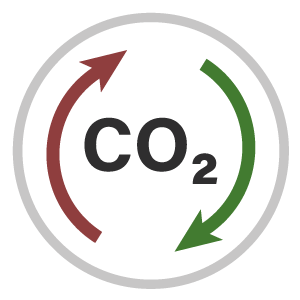Downstream Tasks
As global temperature increases continue, understanding how Earth's ecosystems store and release carbon is more critical than ever. 3D-ABC aims to set a new standard in delivering precise, high-resolution insights into land cover changes, carbon stocks, and ecosystem dynamics. These outcomes will empower data-driven decisions and research across a diversity of fields.
The 3D ABC Foundation Model approach targets eight specific downstream tasks that partially build on top of each other and grow in complexity, focusing on either continental-scale demonstration areas or global data:

Task 1: Land Cover and Change
Land cover and change are fundamental to carbon stock accounting as they determine the spatial distribution of carbon reservoirs and influence carbon fluxes through emissions or sequestration. Employing zero-shot and few-shot learning, the 3D-ABC FM model will generate high-resolution (30–100 m) multi-date predictions of land cover and its changes, providing valuable insights into their spatio-temporal dynamics. This approach aims to evaluate land cover dynamics and their relationship to carbon stocks.

Task 2: Vegetation Height for Amazon and Tundra-Taiga Ecotone
High-resolution forest height measurements are crucial for identifying successional stages, assessing disturbances, and estimating above-ground biomass. TanDEM-X SAR coherence data enables accurate, large-scale forest height mapping. The 3D-ABC FM will generate fine-scale height maps (0.1–1 ha resolution), validated using extensive datasets, including spaceborne (GEDI, ICESat-1 & 2), airborne, and terrestrial lidar-derived height measurements. These outputs will enhance forest structure characterization and support above-ground biomass assessment in Task 3.

Task 3: Carbon Stocks Above-Ground for Amazon
The Amazon is a critical global carbon reservoir, storing vast amounts of above-ground biomass and regulating the global carbon cycle. Forest biomass is a direct indicator of carbon storage and is key to understanding carbon dynamics. However, estimates remain inaccurate due to tropical forests’ spatial heterogeneity. The 3D-ABC FM will use height and structure indices from Task 2 to develop adaptive allometric relationships, generating 1 ha-resolution biomass maps. It will integrate forest growth models (e.g., FORMIND) and airborne lidar biomass maps for validation, addressing the challenges of limited reference data.

Task 4: Permafrost Soil Carbon Stocks
Permafrost-region soils store more carbon than is currently present in the atmosphere, yet their carbon stocks are poorly understood due to spatial heterogeneity and limited sampling across vast areas. The 3D-ABC FM will integrate remotely sensed environmental covariates, climate, and topographic datasets to generate high-resolution soil carbon maps for the permafrost region. These maps will be benchmarked against datasets such as the Northern Circumpolar Soil Carbon Database (NCSCDv2) and Global SoilGrids 2.0.

Task 5: Carbon Impact of Disturbance Regimes
Human- and climate-driven disturbances increasingly threaten the carbon sink potential of forests and soils. The 3D-ABC FM will analyze land cover trends (Tasks 1 & 2) and quantify carbon stock changes (Tasks 3 & 4), linking these to disturbance types and post-disturbance successional stages. By utilizing time-series data of carbon stocks and disturbances, the model will offer fine-scale attributions of carbon dynamics to specific drivers. Validation will incorporate datasets on disturbance such as, biomass, and Helmholtz center airborne lidar campaign data.

Task 6: Uncertainty Estimates from Variable Training Input
The quality and variability of training data significantly influence FM outputs and uncertainty estimates. The 3D-ABC FM will use diverse datasets sourced from various Helmholtz centers, including plot-based, drone, and airborne data, to explore different training scenarios. Comparisons will be made against independent validation datasets and country-reported greenhouse gas inventories to assess the performance of the model under varying conditions.

Task 7: Net Primary Production for Amazon
Current methods for quantifying Net Primary Production (NPP) are limited by ground-based sampling and the inability of optical remote sensing to account for forest structure. The 3D-ABC FM will combine radar (TanDEM-X), lidar (GEDI), and high-resolution forest modeling to produce NPP maps for the Amazon. High-resolution forest models will be used for training, while validation will involve plot network data from initiatives such as ForestGeo and Rainfor. Output maps will be benchmarked against existing NPP maps.

Task 8: Net Ecosystem Exchange for Amazon
Net Ecosystem Exchange (NEE) maps are essential for identifying regions acting as carbon sinks or sources. Current estimates rely on spatial extrapolation from limited eddy flux tower data. The 3D-ABC FM will integrate outputs from preceding tasks, including biomass, forest structure, and soil carbon, to generate NEE maps for the Amazon. The model will be trained and validated with eddy flux tower data, and benchmarked against existing NEE maps, reducing uncertainties in Amazon carbon dynamics.